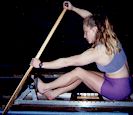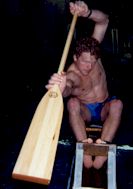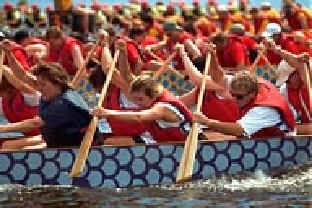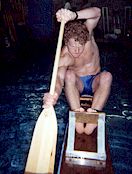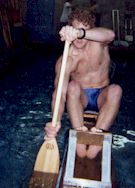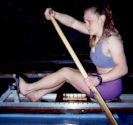Training
Suggestions:
1) Basic
technique should be learned before timing.
2) Team timing
should be developed before power.
3) Power should
be developed before rate.
4) Rate will be
developed last with intense endurance and sprint drills.
5) Twice a week,
75 minutes each, is a minimum practice schedule. Advanced teams practice
four to six times a week.
Notes About
Stroke Rate
The db stroke technique is executed at
varying spm (stroke-per-minute) rates to achieve different purposes:
-Basic technique
training stroke rate is around 45 to 50 spm. Most paddlers can
sustain this pace while completing full upper-body rotation at the catch and fully
burying the paddle. Your coach should spend one-on-one time with you during this
rate to supervise your technique.
-"Six-Sixteen
start sequences" can rate from 60
to 80 spm.
-Race pace stroke rate is around 65 spm for novice teams, about 72 to 80 per minute for intermediate teams, and
85+ for advanced teams.
-"Power"
stroke rate is the same
as your team's race pace, but your coach will incorporate deeper catches and/or more
upperbody lean to facilitate this power interval.
-NOTE: at rates of 72 spm and
higher, it becomes very difficult to
completely bury the paddle and maintain pure form. The World Champion
Chinese team use a special half-buried technique to maintain their
blistering 120 spm rate. Your coach will discuss the pros and cons of going
to higher stroke rates. For beginning boats, a sustainable rate of 65
to 68 spm with intense power is recommended.
|

